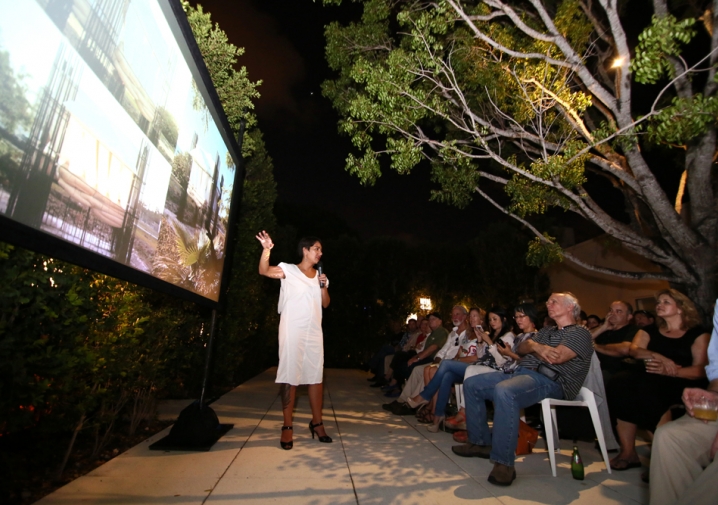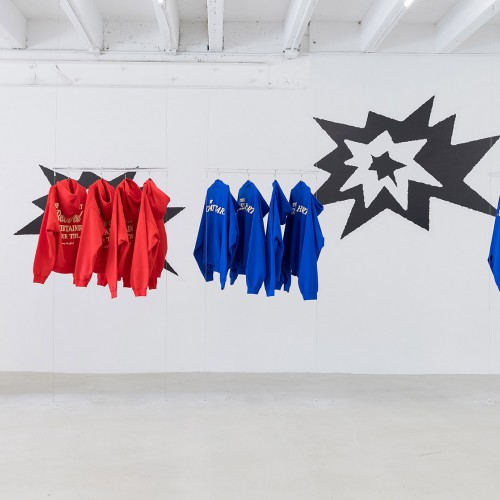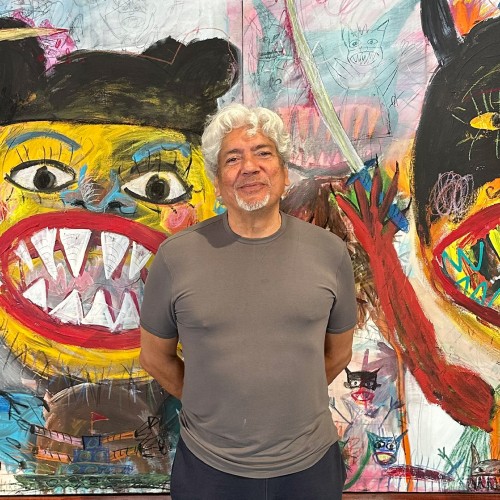On a hot Tuesday evening in August, a crowd of curious, luminous Miami creatives gathered on the rooftop of the Garden Building in the Miami Design District to see and listen. The topic? Collisions. The first thought might be traffic accidents; interestingly, only one of the speakers, Elsa Roberts of the Pedestrian Safety Walk Project, spoke about actual accidents occurring between cars and people in metropolitan Miami (she subsequently invited the audience to learn more about the behaviors of poor drivers in crosswalks and the rights of pedestrians). But overall, the thrust of Pecha Kucha Miami's Design to Collide was to seamlessly integrate concepts of contemporary art and visual theory, architectural and applied design, interracial relationships and quantum physics, all in 5 individual presentations of 20 slides each, for 20 seconds each.
The innovative project called Pecha Kucha, devised by architects Astrid Klein and Mark Dytham of Klein/Dytham Architecture, first appeared in Tokyo in 2003, where global business, technology, sciences, arts and politics could find a place among any audience, in any setting. The slide shows, are collectively the perfect 'elevator pitch' format, where the world's most forward thinkers can deliver their ideas quickly, concisely, and creatively. Think TED Talks, but in reverse: where TED starts at the elite mind and travels downward to the masses via cyberspace, Pecha Kucha begins with the crowd and travels upward, informing the same kind of elevated minds.
Five local creatives spoke during the Miami Design District edition, using the word 'collision' as a conjunction (not just a verb): different disciplines coming together at full speed to inform and enhance one another. Miami Rail editor-in-chief Hunter Braithwaite discussed how critical theory and contemporary art can successfully coexist within a local population that may remain unexposed or unaware of such things. Design firm Collective Inventory's principal Thais Fontenelle spoke of the firm's forthcoming projects as well as elements of applied and artistic design in tandem with practical living space. FIU Artist-In-Residence Xavier Cortada and FIU Professor Dr. Peter Markowitz discussed a joint project where the physical reactions between atomic and subatomic particles are transformed into dazzling artworks. Diana Iglesias and Kim Arrendondo illuminated, through their project Mixed in Miami (a remix of the Hapa Project begun by artist Kip Fulbeck), how race is not a barrier between those in love, but a bridge. Elsa Roberts, as mentioned above, presented her Pedestrian Safety Walk Project. Finally, Terence Riley, principal of K/R Architecture (who, incidentally, designed the Garden Building where the event took place) showed the audience how architectural experiments worldwide can find a home even in the most unexpected locations.
Pecha Kucha Miami Design To Collide sponsorship included the Miami Design District, Spirit of the Tsars Vodkas, Perrier, Soi Chinese, L.A. Sweets and Schrift & Farbe Creative Group. Organized by Carl Hildebrand and Rockaway PR's Dejha Carrington, Design to Collide took place on July 30. For more information on Pecha Kucha and upcoming presentations in Miami, visit: https://www.pechakucha.org/cities/miami



